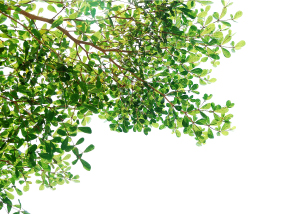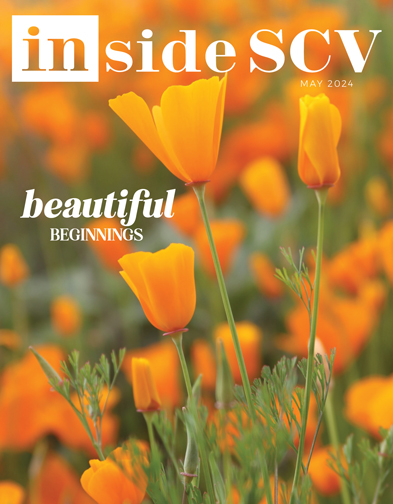YOUR HOME - EXTERIOR LOOKS
Plant Now, Enjoy Later!
February, 2015 - Issue #124
 courtesy of Shutterstock |
Carefully unpack the bare root tree from the container it came in. Be careful not to damage any of the roots during the unpacking process. Set the tree into a bucket of water. Allow the tree to soak for four to six hours prior to planting. This will allow the roots of the tree to soak up water and not dry out during the initial shock of planting.
Dig a hole slightly larger than the diameter and depth of the tree and soil width. For example, if the tree roots and soil are 50 centimeters wide, dig a hole 60 centimeters wide to allow for maximum root spread. Check to be sure there are no large weed roots in the hole you have dug. If these are left there, they will compete with the new tree and might restrict its growth. Add organic material to the hole and mix well. This will get your young tree off to a good start.
Plant the tree so that the roots meet the base of the tree. This is known as the "root collar" and it should be level with the ground. Shovel the remaining dirt from the container. Add more if necessary into the hole, taking care to pack the soil firmly around the tree.
Build a water basin around the outside of the tree. Give the tree plenty of water.
Add mulch a yard wide and two inches deep around the tree base. Be sure not to let the mulch touch the tree itself. Leave an area approximately four to six inches around the trunk of the tree. It allows the tree to breathe and a space to check the base for any possible problems or insect damage.
Water it every two weeks throughout its first summer. If your area is experiencing a heavy long term drought, do take the time to water your young trees in the winter about every two weeks, too. Trees get very stressed under those types of weather conditions and need the additional moisture to help them survive and thrive.
If the tree is fairly large, it will need to be staked for a year. Hammer a 39-inch stake into the ground before planting the tree, at a 45-degree angle and for three quarters of its length, in a position so that the top of the stake is above where the tree is being planted. Then tie the tree stem to the stake with a rubber tree tie. After one year, the tree should be securely rooted. Remove the rubber tree tie and saw off the stake at soil level. Be careful not to injure the young tree accidentally with the saw.
Green Thumb International 259-1072
2015 Landscaping Trends are Light on Water, Heavy on Design
California's drought has continued into 2015, which means that water conservation is at the top of the West Coast landscaping trends list.
While some may see water-use restrictions as a detractor, innovative designers view it as an incentive to become more creative in thought and practice. The results are outdoor spaces high on design and low on use of our critical water supply.
Eat your Greens
Edible ornamentals will beautify the trendiest exteriors in 2015. Expect to see gorgeous growing herbs, vegetables, fruit and salad greens pulling double duty as design elements. Ornamental kales in shades of green and purple provide luxurious texture and color - and can end up in your juicer, blender or soup pot if you use organic landscaping practices. Certain varieties of peppers and eggplant boast high-end style while bringing color and elegance to your yard.
Go for Permanence
Santa Clarita is a young city, which may explain why so many of her residents seek a sense of timelessness in their design. Dramatic boulders, brick terraces, classic pavers, stone seating walls and rock gardens not only add practical and visual interest, but bring major design to your space, no sprinklers required.
Choose On-trend Texture
Ornamental grasses provide height, dimension and texture while being easy on the water bill. Choose a variety of different colors and shapes for a yard that looks lush without heavy watering. These drought-friendly options are easy to maintain, too. Water-sipping plants are the epitome of efficiency; less water means less growth, which means less maintenance!
NV Landscape, Inc. 286-8888
|
||||||||||||||||||||||||||||





